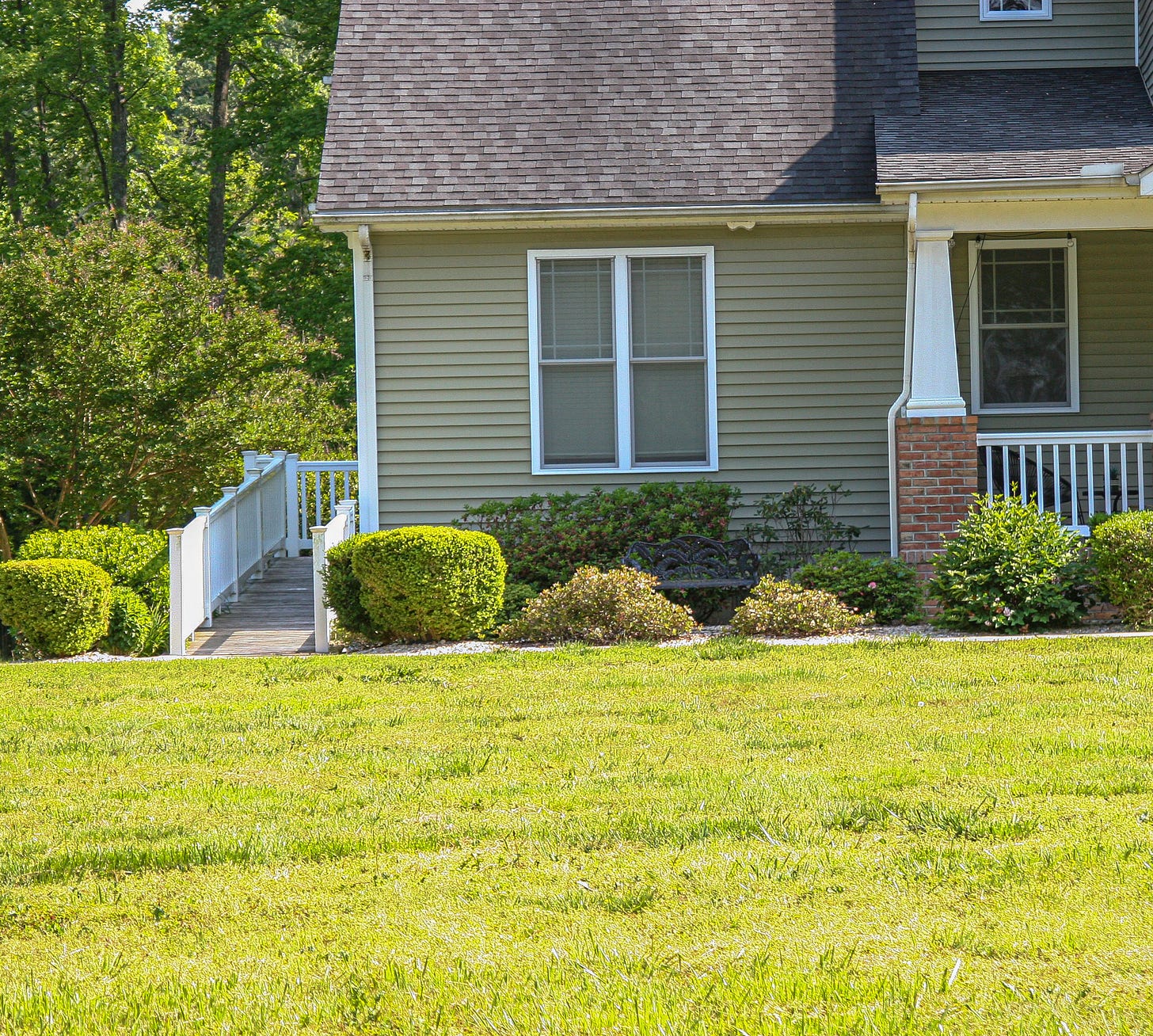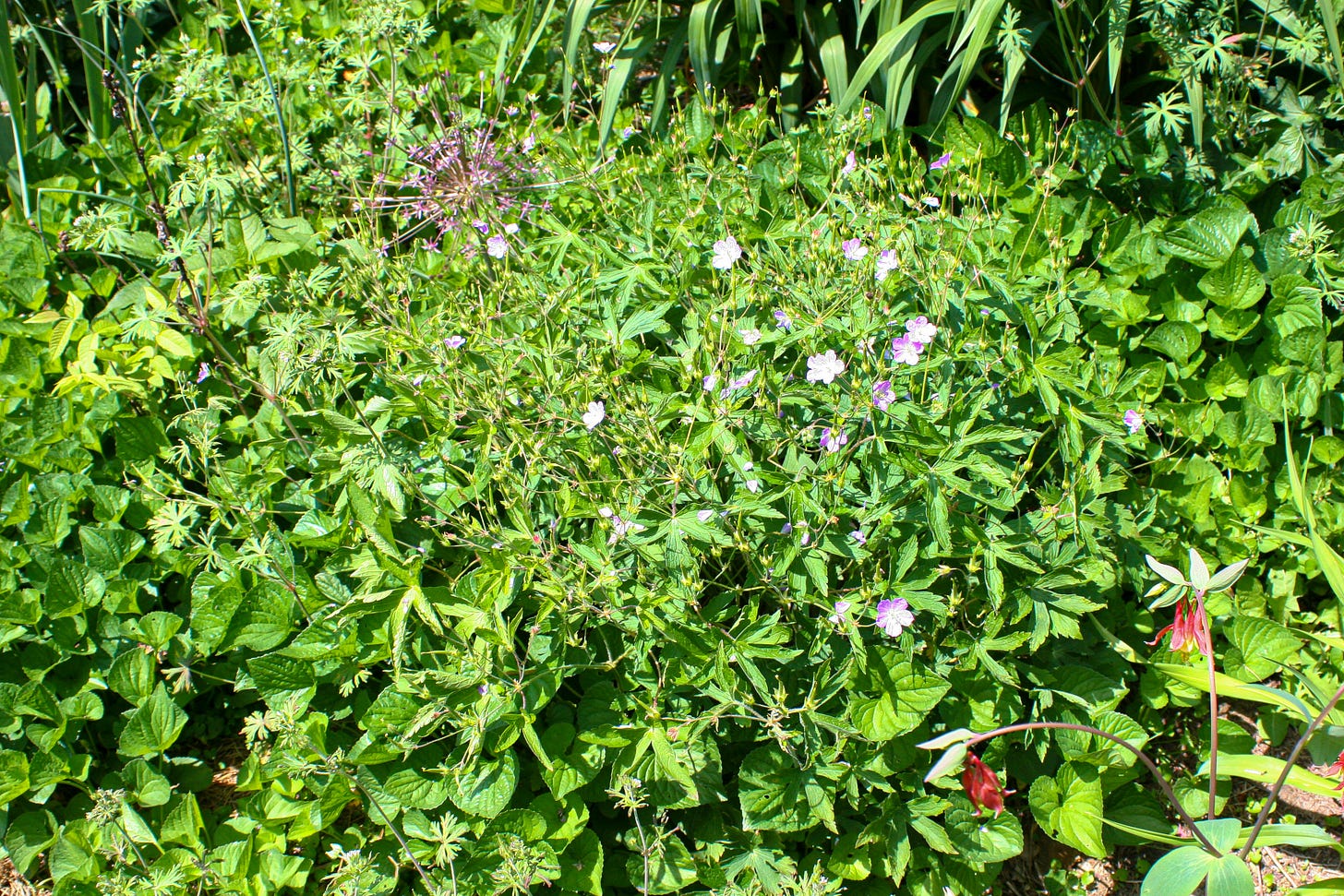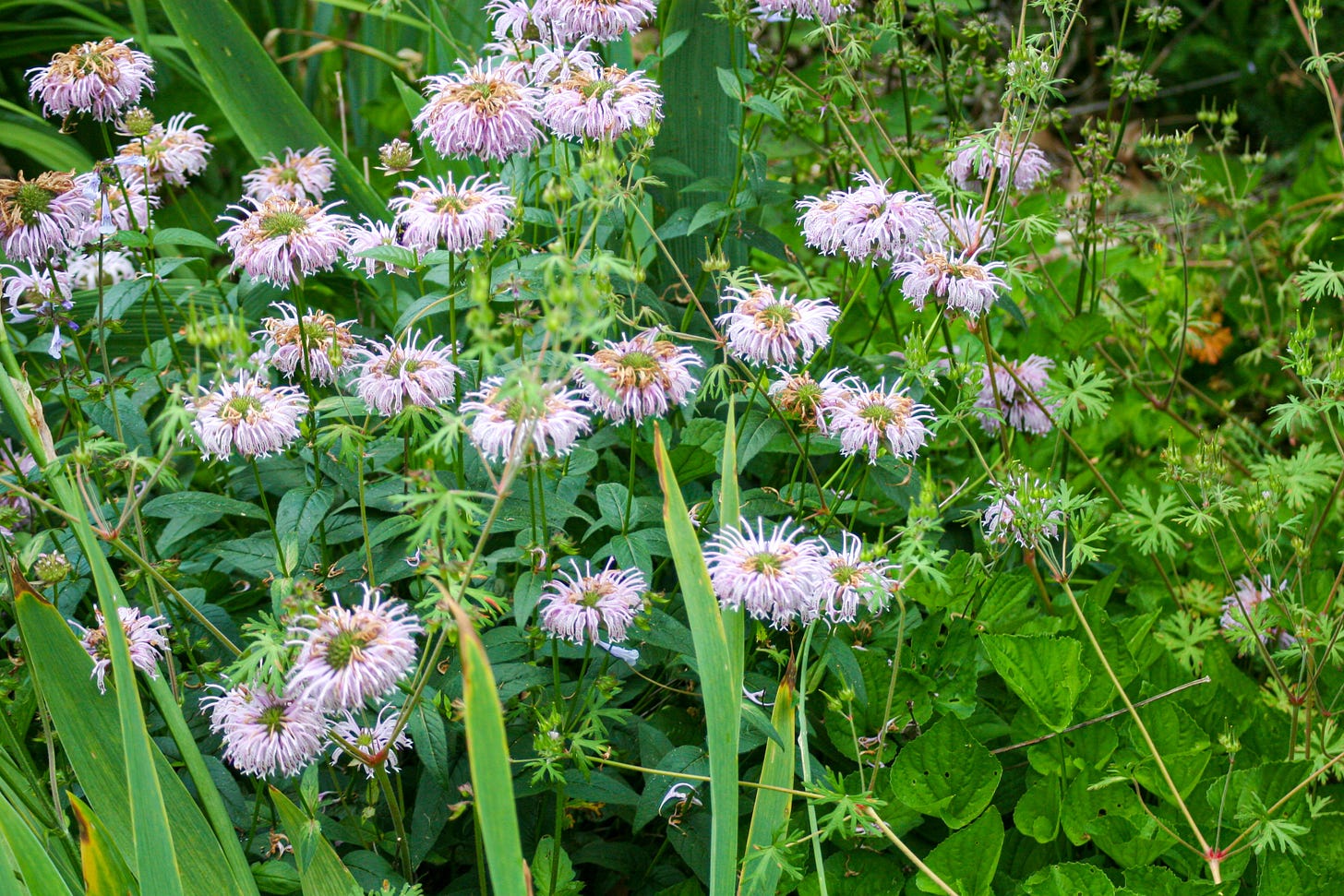Green (Living) Mulch
Mulch! (Sound of Heavenly Choir)
Mulch is great stuff. It helps your garden in so many ways! Conserves moisture. Regulates soil temperatures. Invites earthworms to come and play, thereby helping break up tough soils. It adds organic matter to soils and it’s even (gasp!) thought to fend off weeds.
Yes, we love mulch. But somehow, some way, it seems Granny’s garden became all about mulch - rather than plants. And that has repercussions throughout the environment.
Look around any suburban neighborhood. Mulch, doing its great thing. But - how many gardens can you spot where the area mulch covers is greater than the area covered by the plants it’s supposed to be helping out?
It’s very strange. You’d think the plants were there to help the mulch rather than the other way around. It’s puzzling. How did mulch become the “thing” in gardens?
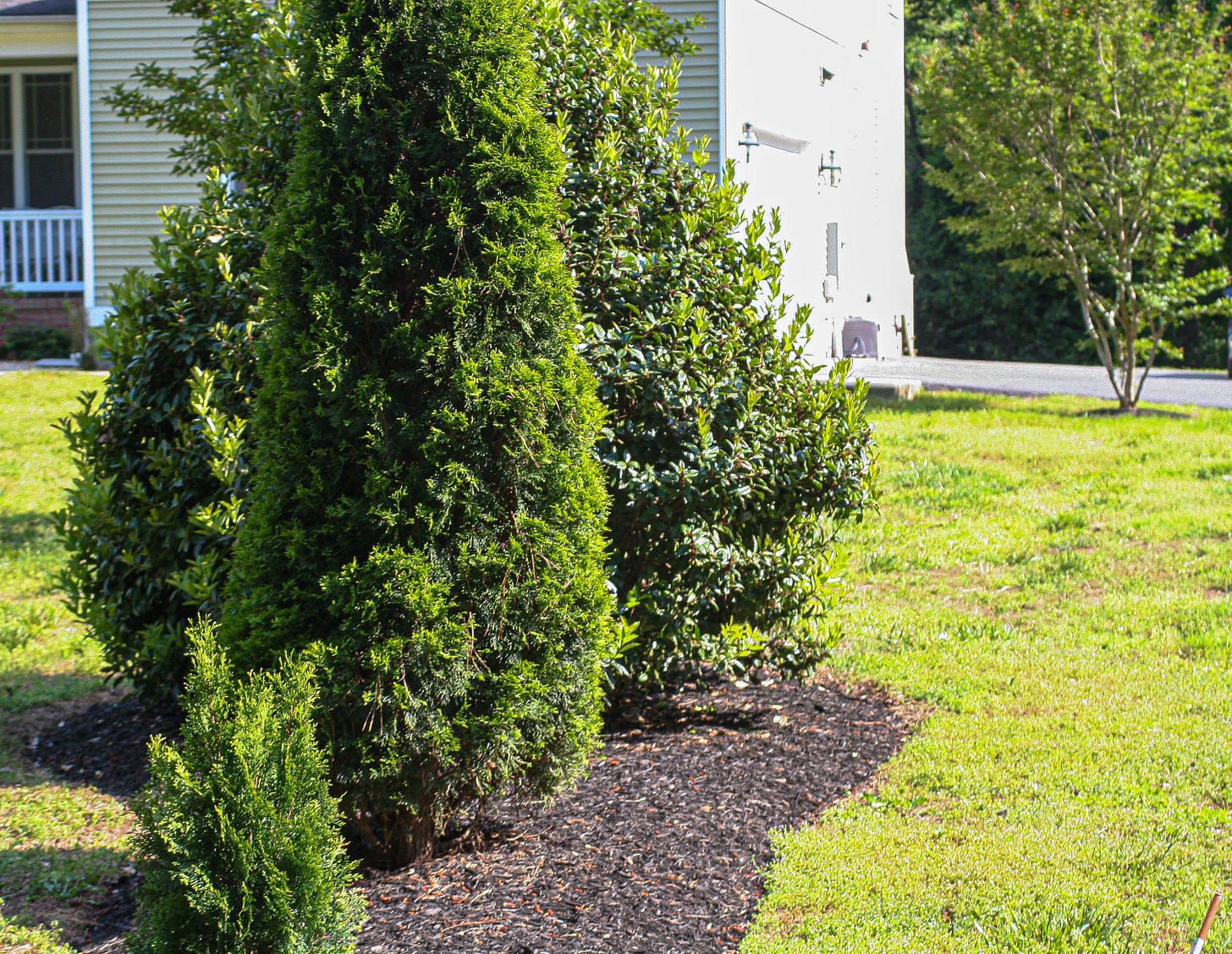
Mulch is never advertised directly. Not even informercials are required; mulch is advertised by its users, gardening writers, gardening shows, and, of course, the neighbors.
It’s time to declare our independence from Granny’s “who needs plants” “gardening” plan.
What would happen if instead of isolating all the little plants away from all the other little plants we just let them snuggle together the way they do in wild areas? It’s been done before.
The native Americans, among others, led the way centuries ago. Remember the famous “3 sisters?” (The three sisters are corn, which supports “sister” bean vines, and “sister” squash, who covers the soil brilliantly.) All planted in the very same hole, those 3 sisters grew strongly. Months of inattention later, plenty of food was available which could be eaten on the spot or dried for winter meals.
No mulch, less weeding…it sounds a bit like a dream, but it’s so possible, even if we don’t plant those sisters.
The answer to the puzzle is - GREEN (Living) MULCH.
Green mulch is, quite simply, using the plants themselves to accomplish all of the goals of mulch, just like the Native Americans did.
Let’s compare – but first, let’s consider some additional benefits of green mulch, that makes it, hands down, the best alternative possible helping Mother Nature.
One amazing benefit is that you’ll be helping bees. Yes, bees. Most bees live in the ground, rather than hives, trees, or other places we think they’ll choose. Ground bees help the soil magnificently. Many pull leaves, or parts of leaves, into the soil itself to provide cover and food for offspring, thus breaking up and fertilizing soils. Then, of course, they fly about your garden, pollinating everything in sight. Given the ongoing difficulties the non-native honeybees are experiencing, it pays well to help these small, but so, so, useful (and native) critters. Sadly, wood mulches of all sorts are just too heavy for bees to lift, hence smothering those that might have been there when the mulch was applied, and blocking their ability to create a home for themselves and their offspring. Small wonder that bees, like so many other creatures, are declining in number.
For the bees alone, green mulch, also sometimes called living mulch, is the best alternative. All those leaves, above the ground, do great work, without blocking a bee’s front door.
Then, there’s saving the endangered Lightning Bugs. Lightning bugs, those joys of childhood, are getting closer to extinction every year that passes, due to light pollution and Granny’s “nasty for lightning bugs” gardening approaches.
Poor harmless Fireflies…they fly at night. During the days they like to rest, hopefully in some hidden spot where a hungry bird won’t find them. Plants snuggled altogether provide ideal resting spots for these imperiled beauties. They also can help feed the young, called “larvae.”
While Fireflies are about as harmless as survival in nature will allow, their larvae, the baby fireflies, are fierce and hungry creatures that just love to eat…slugs. Yes, the fireflies will help you keep your garden from being overrun with slugs. So, don’t poison the slugs! Grow more plants, provide darkness at night, and you’ll find slugs are on the run, not lightning bugs.
Now, on to a side by side comparison of green mulch vs. others.
Helps conserve moisture in the soil. Done! Some common mulches actually deprive the soil of moisture, due to their ability to soak up water (sadly, wood mulch is a culprit here). It can take a great deal of rain to thoroughly wet the mulch before the soil beneath it gets much water. With green mulch, however, water runs right off plant leaves - and falls to the ground gently, where the roots can drink it up. Because the plants prevent the water from striking the soil directly, splash back (where mud, etc. splashes up onto plants) doesn’t happen, either. Water ends up in the soil, where plants can use it.
In fact, green mulch actually holds more moisture in the soil than a “top covering” variety. This is simply because the moisture penetrates deeply and is held by roots under the surface, whereas wood mulches, etc., hold the moisture only at the surface of the soil.
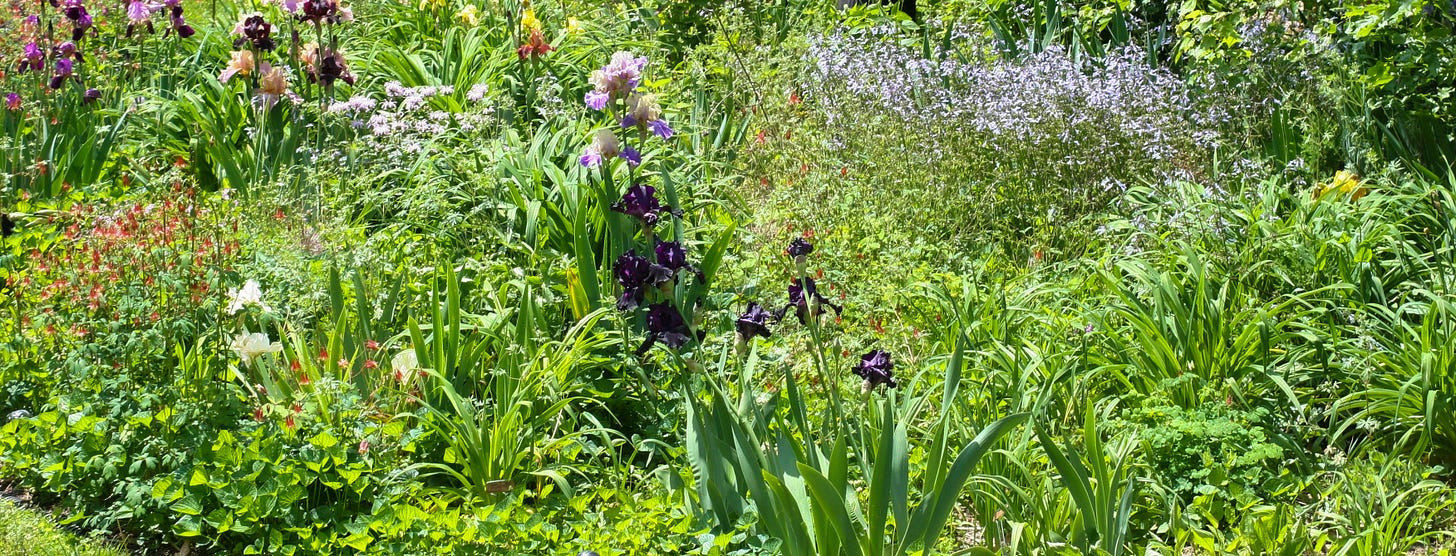
Regulates soil temperature. Done! Shading the soil so brilliantly keeps the blazing sun from reaching soil. Consider sitting beneath a shade tree, or shade sail, or umbrella, or roof, whatever, in the raging summer sun. The temperature is distinctly lower in the shade than in the sun. Plants, with their photosynthesizing leaves, do all that easily.
Breaks up tough soils. Done! Earthworms are not the only creatures which really enjoy the shady, encouraging atmosphere of mulch. Roots do, too. Roots are unsung heroes of the gardening world; they are the basis for the beauty on top, but often ignored. Roots exude enzymes at their tips to break up material they want to grow through, then, achieving success, they bring nutrients up from the soil which will eventually be shared with the whole plant community. The more roots, the more benefit to all the plants, related or not.
Adds organic matter to soils. Done! Wood mulches, etc., tend to break down slowly. Plant leaves break down quickly. Either way, nutrition is added to soils.
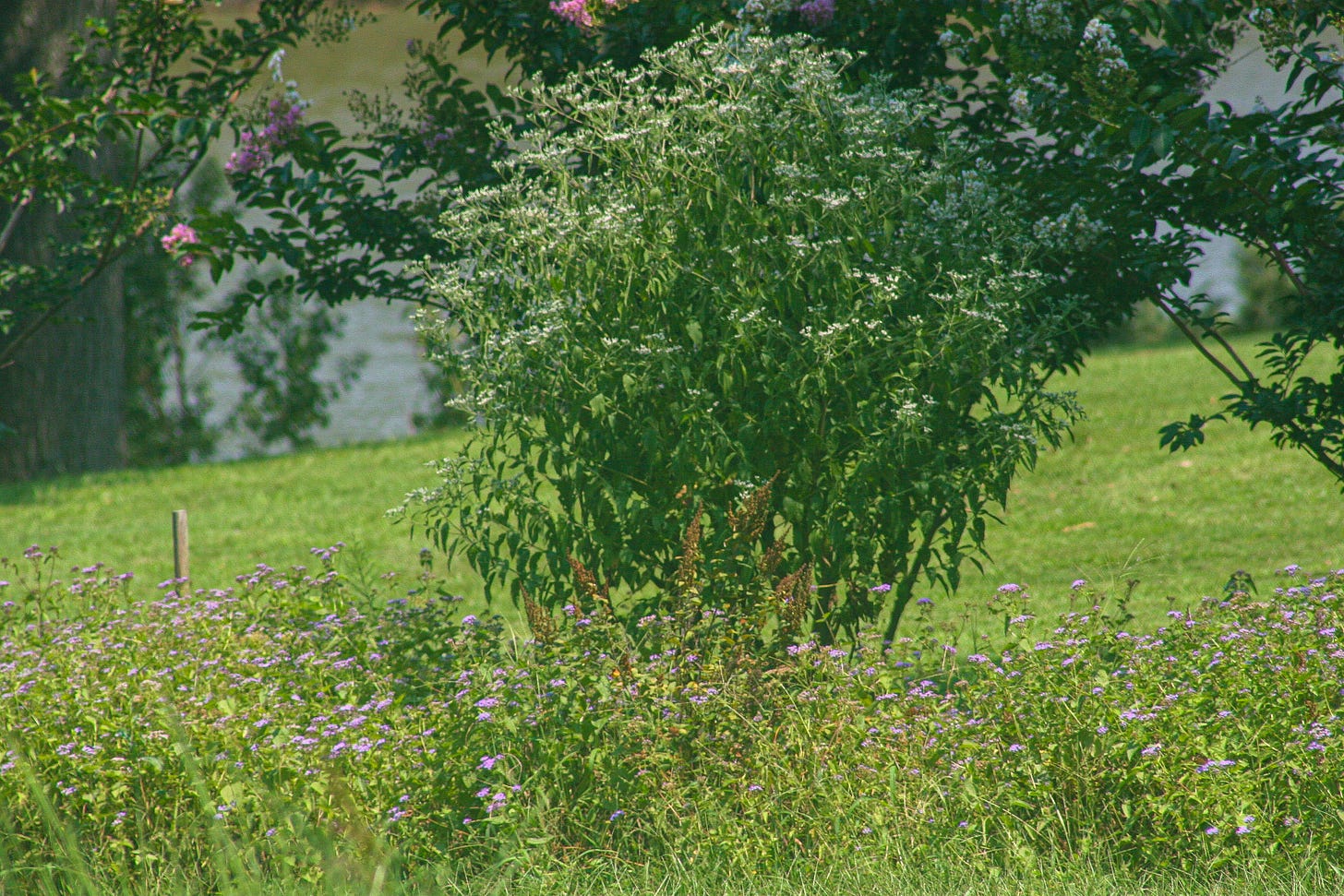
Helps prevent weeds. Done! All that shade created by plant leaves makes seed germination more problematic – many seeds require light to stimulate their germination process. Less sprouted weeds, less weeds. And…oh, be still my heart…all that shade will create tough conditions for seedlings even if it does. So, less weeding.
Frogs, toads, and birds love moving about unseen by overhead threats. Mice and voles, those horrors of bulb lovers, are much less attracted to life under green mulch than under wood mulch, because they are so utterly visible to a passing predator, who can peer under the leaves unseen themselves. Wood mulch gives these mice and voles a great opportunity – there’s no cover for their enemies.
Some folks are very focused on the competition between plants in a garden. Plants can steal light, water, air and space from each other. As with any other creature, some are bullies, but most are friendly and enjoy company.
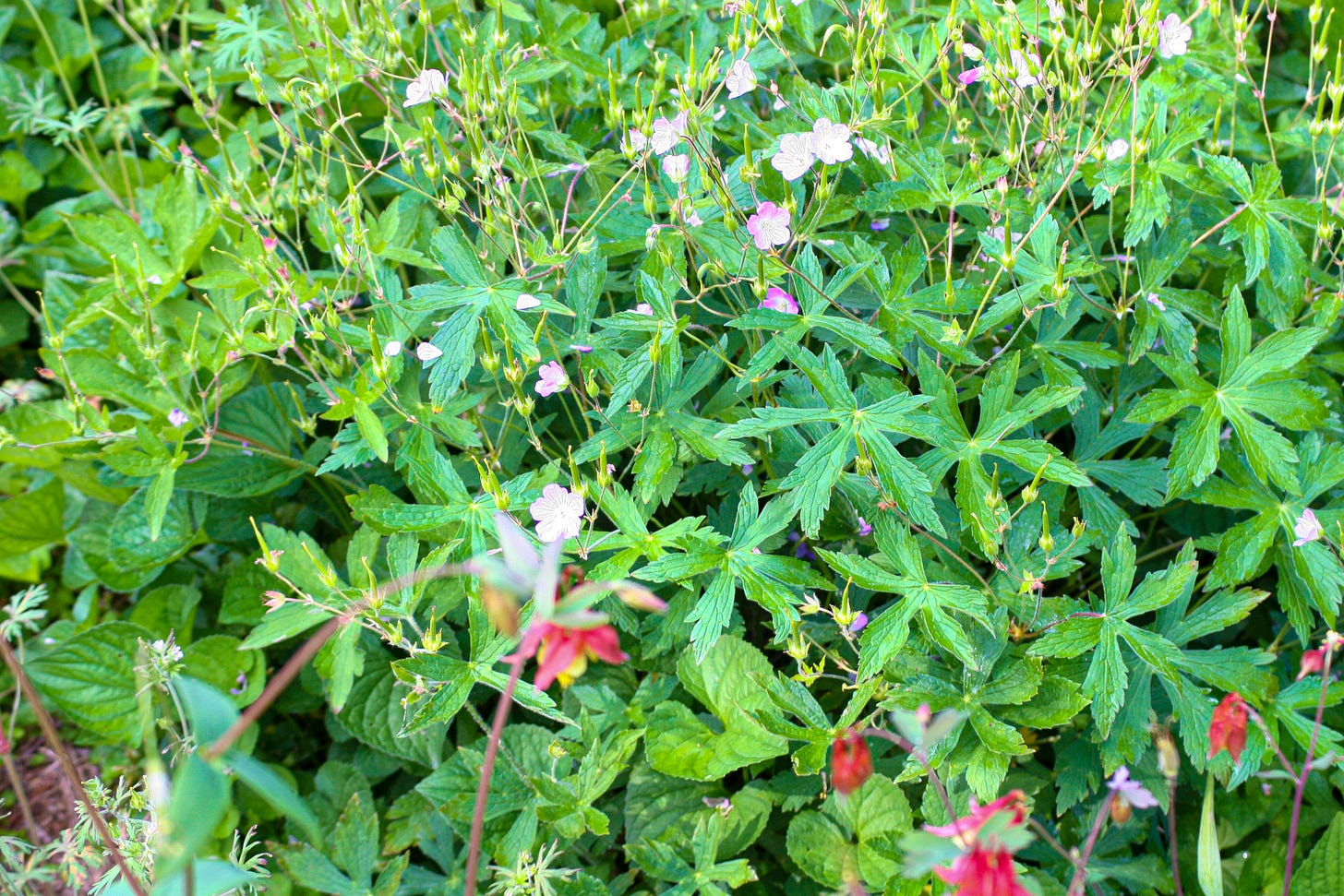
Want to save energy, save time, save water, save endangered fireflies and bees, while enjoying a fabulous garden and the many butterflies, birds, and other creatures who love it too?
Green Mulch is the answer. Coming soon – creating green mulch from old-fashioned garden areas.
More information: https://edgeofthewoodsnursery.com/living-mulch-part-one-an-ecological-alternative-to-wood-mulch




